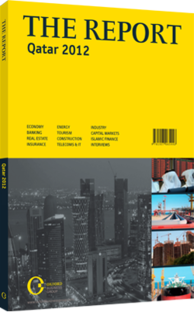Policy priorities: Measures to ensure economic and financial stability
The National Development Strategy 2011–16 (NDS) is a vital step for Qatar, focused on institutional reform to support the longer-term vision of a diversified, knowledge-based economy. Reforms will target strengthening six areas: strategic policy and planning; budget and financial management; organisational alignment; human resource development; enabled institutional processes; and performance management.
PLANNING: One major component of reform plans is the development of a macro-fiscal strategy and planning process to better organise public spending programmes and align investments with results outlined in the Qatar National Vision 2030. Expenditure is currently planned against an annual budget that is based on inputs such as salaries, specific projects and operating expenditures. Drawing on models from around the world, the NDS recognises the need for a more effective allocation of resources that maximises revenue efficiency. As such, a specific goal of the NDS is to reform the process and “establish a forward-looking and coordinated budget process, linked to the NDS and to the operational plans of spending agencies”.
Linking budgets to the NDS, which is a five-year strategy, will require shifting away from annual inputs to a multi-year planning process that is focused on outcomes that are in line with objectives in the NDS. The reforms will allow agencies greater flexibility to reallocate resources during the fiscal year, as the focus would be on delivering results and outcomes and not carrying out specific pre-determined activities. The NDS calls for a 27-month capacity building period during which the cabinet’s Central Policy and Planning Department and the General Secretariat for Development Planning (GSDP) will help train ministries and agencies to enable staff to develop strategic long-term plans and shift from annual to multi-year budgeting.
PERFORMANCE INDICATORS: Monitoring and evaluation will also change under the reforms. These plans will be associated with key financial performance indicators that will help measure progress. New systems will be installed to integrate functions of government along with ministries and other agencies that plan and implement programmes. Installing automated budgeting systems and monitoring tools is expected to improve transparency and help manage the overall process.
FRAMEWORK GUIDES INVESTMENTS: In parallel, Qatar will establish an investment management framework that will help prioritise projects. As policymakers wrote in the NDS, “A coordinated public investment programme will strengthen the government capital budget by ensuring that project objectives are aligned with the National Development Strategy 2011–16, linking the strategy to specific budget allocations. It will preserve and expand national wealth by selecting capital projects that create lasting social worth.”
A critical component of the investment management strategy will be a public-private partnership framework through which the government will engage with the private sector on specific projects (see analysis).
The NDS envisions a significant role for the private sector, not just in implementing contracts but also in investing resources to drive growth. The government expects the private sector to invest $107bn in non-hydrocarbons sectors and a further $23bn in the oil and gas industry by 2016. Integrating privately funded projects under a national framework will ensure these investments are made in line with the country’s broader strategy, and that the benefits of the investments in terms of knowledge transfer are fully maximised.
The government is working to ensure financial stability, in part through the actions of the Qatar Central Bank (QCB). The riyal is tied to the dollar, but the QCB controls liquidity through reserve requirements, the QCB money rate, open market operations and administrative controls on banks’ consumer credit activities.
Since 2011 the central bank has also issued Treasury bills, which it has used to manage liquidity and develop the short end of the yield curve. Finally, the QCB utilises a range of preventive measures to ensure the economy is not exposed to an unacceptable level of risk.
You have reached the limit of premium articles you can view for free.
Choose from the options below to purchase print or digital editions of our Reports. You can also purchase a website subscription giving you unlimited access to all of our Reports online for 12 months.
If you have already purchased this Report or have a website subscription, please login to continue.

